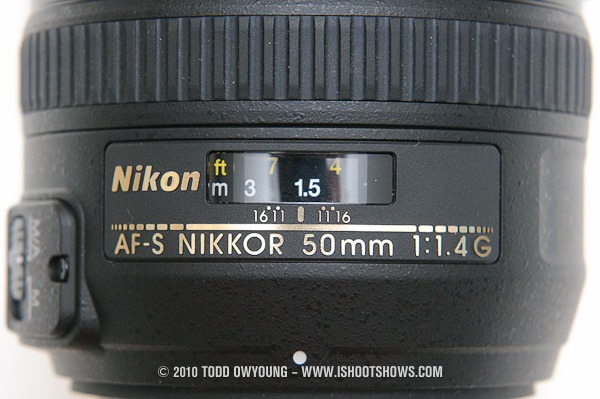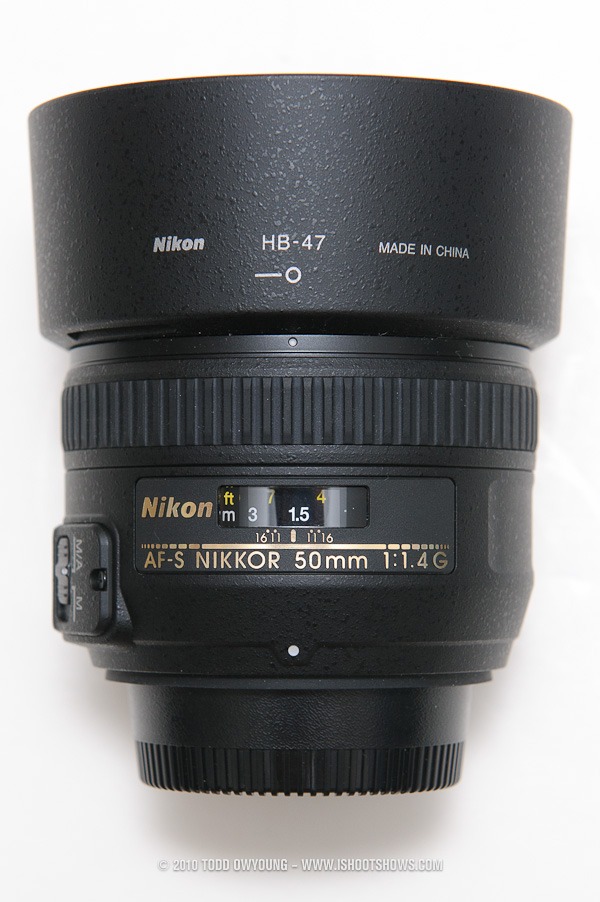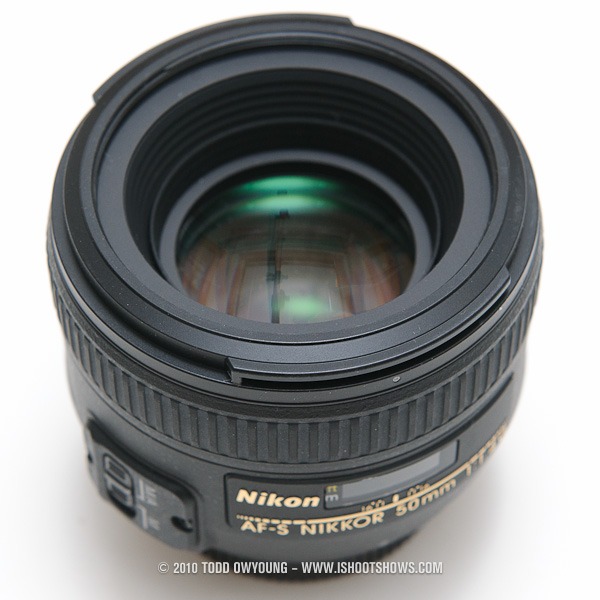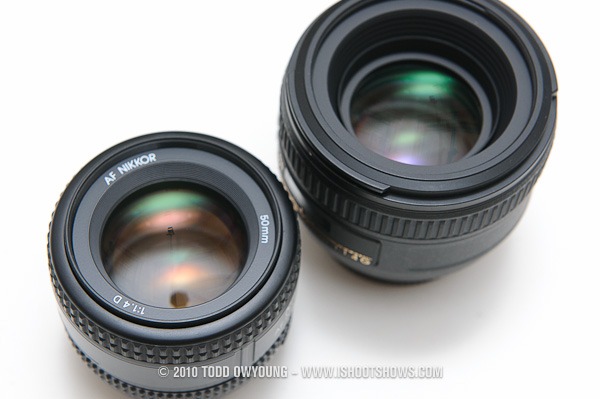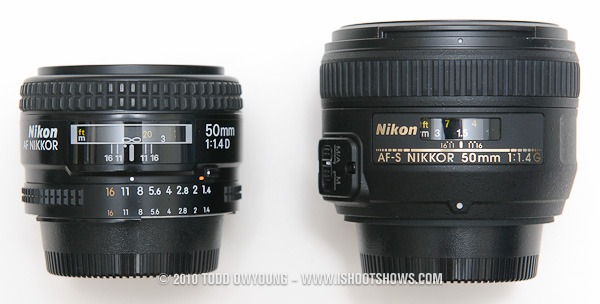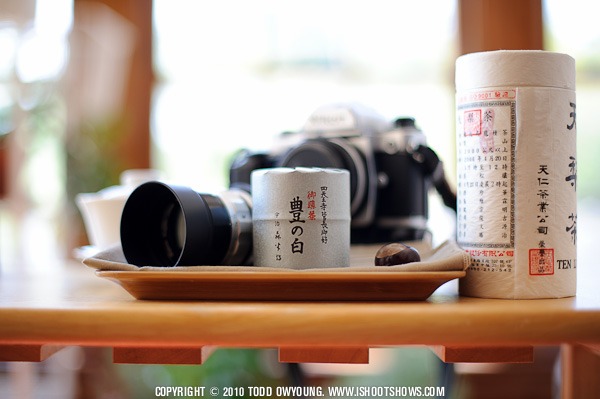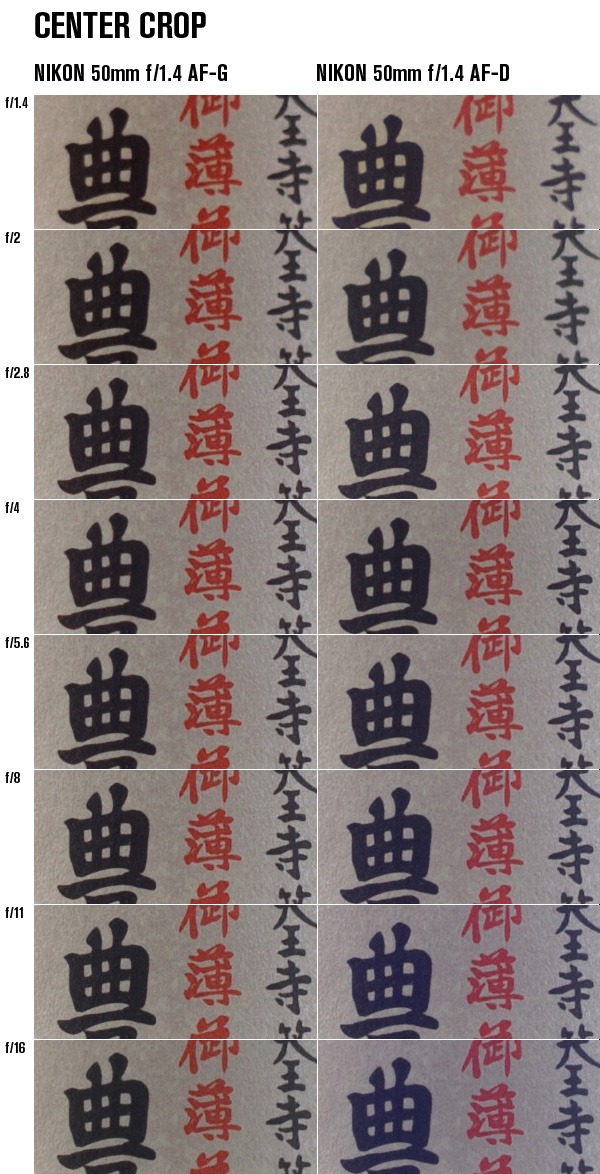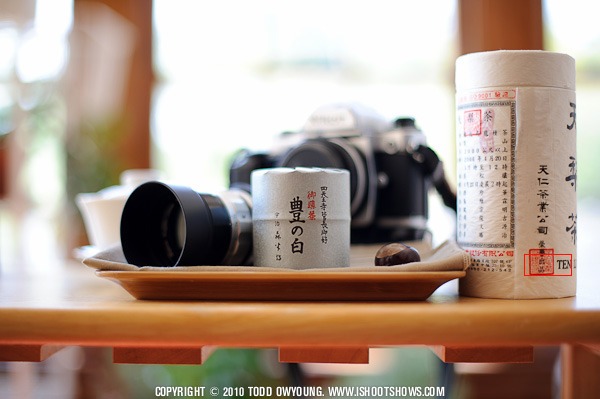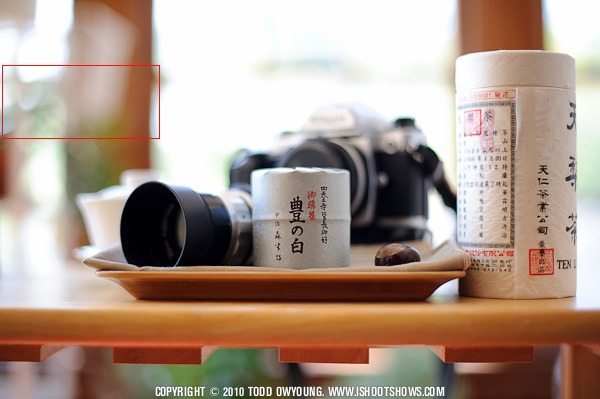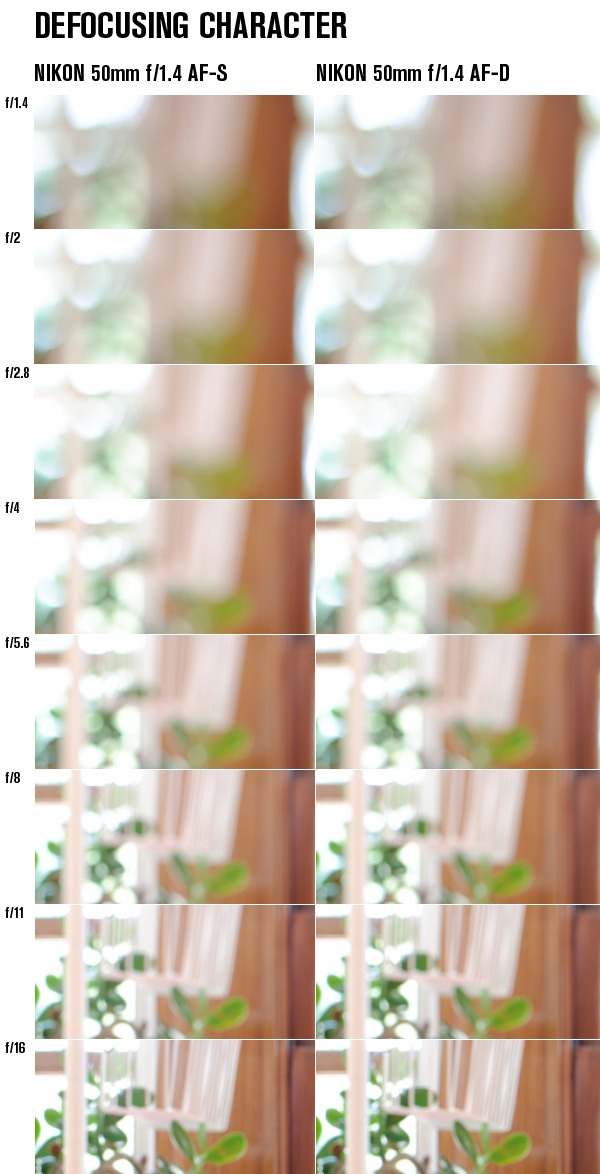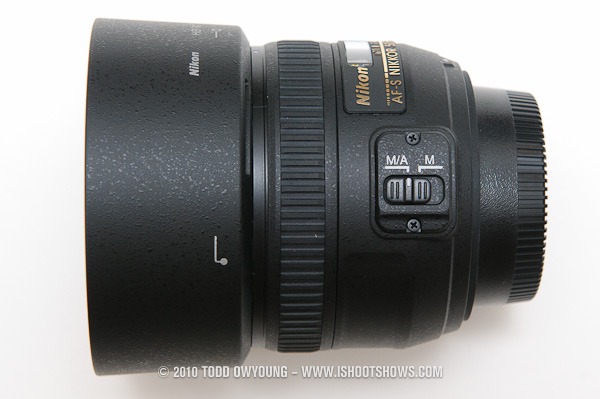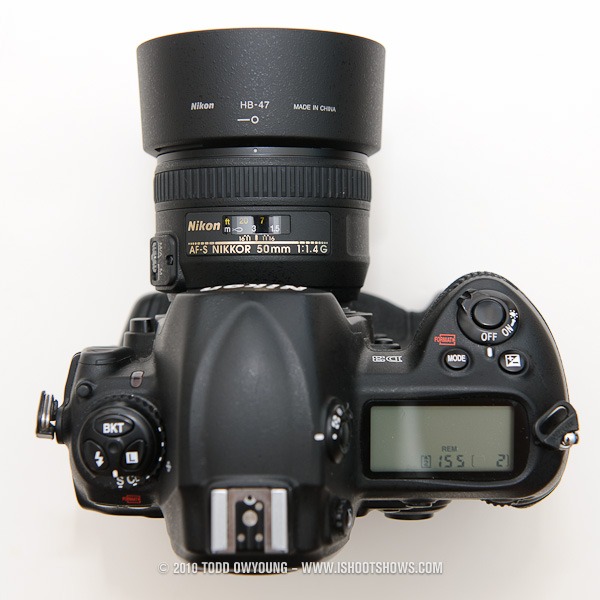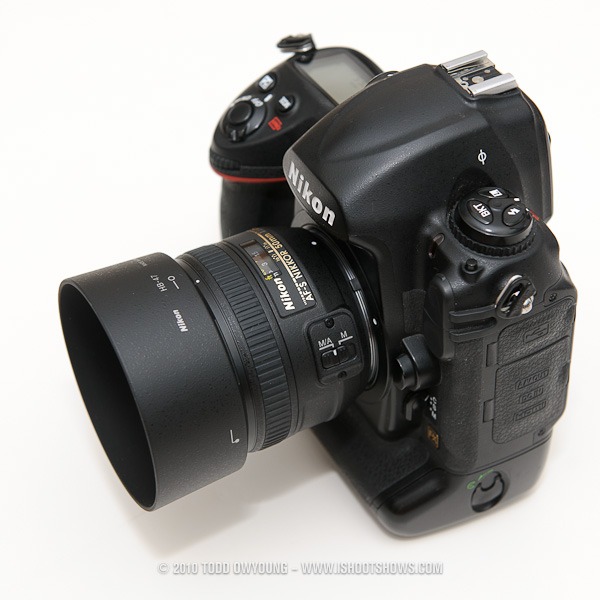Even with increasingly stunning high ISO performance in DSLRs, there's just no substitute for fast glass. After years of neglect, Nikon's introduction of the Nikon 50mm f/1.4 AF-S marked the start of a new era for F-mount primes.
The new AF-S lens features a built-in Silent Wave Motor, drops the aperture ring, and features a brand new optical design over the older 50mm f/1.4 AF-D lens it replaces.
The 50mm f/1.4 AF-D is a lens that's been with me for years. In fact, I used the Nikon 50mm f/1.4 to shoot my very first concert. Is the new AF-S lens a worthy replacement?
The New Nikon 50mm f/1.4 AF-S
Build Quality
The build quality of the new AF-S lens is good, but the lens feels less dense than most “professional” Nikon lenses, and even the 50mm f/1.4 AF-D it replaces. However, with such a simple lens, it's hard to find real fault with any of the build.
The 50mm AF-S comes with the HB-47 lens hood, which secures to the lens barrel with a friction lock. Once locked in place, the hood is plenty solid. When using primes, I leave the matching lens hoods in place at all times, and the 50mmAF-S was no exception.
Optics
Like most other recent lens updates, such as the Nikon 70-200mm f/2.8 VR II, Nikon has given a slight tweak to the optical design of the new 50mm f/1.4 AF-S. The new 50mm features 8 lens elements in 7 groups, up from 7 elements in 6 groups in the previous model. However, on examination of the lens construction, both the AF-S and AF-D lenses share the same basic Zeiss Planar design, so Nikon hasn't reinvented the wheel with this one.
The only real criticism I have of the new 50mm is that it lacks Nikon's new Nano Crystal Coating, which we've seen on all the other new f/1.4 primes released by Nikon in the last year.
Controls
The new 50mmm features fewer moving parts on the exterior of the lens as compared to the AF-D lens, with just a focusing ring and a toggle for Manual/Auto or Manual focusing control.
The big change in the usability of the lens is that, thanks to the AF-S motor, full manual override of the autofocus is possible at any time. This function is in contrast to the geared control of the AF mechanism in the AF-D lens, which would actually turn the focusing ring as the lens focused.
With the new lens, the focus ring only engages when moved – during AF, it doesn't budge.
As a “G” type lens, the new 50mm f/1.4 AF-S does not feature an aperture ring for manual control of the lens. Like all modern Nikon lenses, this is controlled electronically from command dials on the camera body. Personally, I never use the aperture ring on my older lenses when I'm shooting with my DSLRs, so this shift is for the better in my opinion. If I wanted to use a 50mm lens on my Nikon FA or Nikon FM3A, I'd grab the fat 50mm f/1.2 Nikkor for a true manual experience.
Comparison – Design Changes
Front Element
Compared to the older AF-D lens, the new 50mm f/1.4 AF-S features a fairly recessed front element, as well a larger 58mm filter size, up from the common 52mm filter of the AF-D.
Together with the supplied lens hood, I think there's a lot of peace of mind built into the design, so you can feel pretty confident about going filter-free with the new lens. (If you do want to use a filter, I personally use Nikon's clear “NC” filters.)
One nice improvement with the new AF-S lens is that the front element is now non-rotating during focus, which makes the use of circular polarizers easier. Another improved aspect of the new 50mm is that the barrel length remains constant; focusing changes the length of the inner elements only.
Lens Barrel & Design
Physically, the new lens is march larger than the old AF-D 50mm, gaining length and width all around. It's actually a surprisingly fat lens next to the AF-D, considering that they essentially share the same lens design.
Due to the fatter barrel of the lens, I found that the new 50mm was a little easier to handle than the slimmer AF-D lens when using bodies like the Nikon D700 or Nikon D3. However, I do prefer the smaller size of the AF-D lens – it's small enough to slip into the corner of a bag easily, while the new lens is just fat enough to be less of a spontaneous carry.
While the exclusion of an aperture ring means that the new AF-S lens is only usable on new cameras, I personally never use my AF lenses on my manual focus film bodies, so there's nothing to miss. If anything I welcome the simplification of the controls, since there's no way of accidentally disengaging the automatic aperture control on the lens, as happened from time to time on the AF-D 50mm.
Image Quality & Performance
In comparing the Nikon 50mm f/1.4 AF-S with the Nikon 50mm f/1.4 AF-D, I set up a simple test scene. All results are based on this scene, which was at a distance of about 2-feet from the sensor plane. As optical performance changes with distance, one should heavily consider this factor in the following results.
Center Performance
The crop selection is highlighted above in the red rectangle at the center of the frame.
Center Crop – Analysis
The first thing I notice about the new 50mm is the improved contrast – not only at wide apertures, but throughout the range. One complaint I've always had with the AF-D 50mm is the “airy” contrast at wide apertures, and the new AF-S certainly gives a more “modern” image rendering with improved contrast and punchier blacks.
Just as I'd expect, the new lens does make gains in sharpness, offering about a 1-stop improvement over the older AF-D lens. Past f/11, sharpness in both lenses degrades due to diffraction with the Nikon D3's sensor.
Center Hotspot
One thing to note is the presence of flare in the AF-D lens above f/8. This hazing in the center of the frame is a known effect that results from reflection from the rear lens elements.
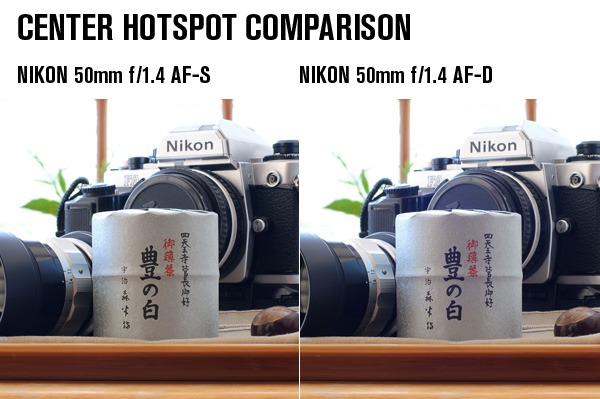
While it's most notably known among IR photographers, this hotspot is an issue when shooting backlit scenes like the test I used or shooting against a white backdrop in the studio. With the new 50mm AF-S, it looks like Nikon has addressed this issue.
Edge Performance
The crop selection is highlighted above in the red rectangle at the lower right of the frame.
Edge Crop – Analysis
Out at the edge of the frame, there's much less to choose from with the AF-S and AF-D lenses.
Defocusing Character
The crop selection is highlighted above in the red rectangle at the upper left of the frame.
Defocusing Character – Analysis
The defocusing quality of these two lenses is, as expected, pretty similar, due to the similar lens design. I'd give the the AF-S the nod for a slightly smoother presentation in the defocused elements at f/1.4 and 2, but it's so close that I wouldn't consider the out of focus rendering of these lenses a major distinction.
Autofocus
AF-S
One point that should not be overlooked is that the new lens features an entirely different way of focusing than the AF-D 50mm, which is with a built-in AF motor. This system is in contrast to the screw-driven system of older lenses, where the AF motor was based in the camera body. With the AF-D lens and compatible bodies, a small pin in the camera's lens mount connects with a screw in the lens, which in turn moves the lens elements.
Since Nikon has recently stopped including this camera-based AF motor in many of the entry-level DSLRs, the need for AF-S lenses has been a big issue. Until recently, there were almost no options for fast lenses that would work with these cameras, much to the alienation of new photographers.
Noise
As advertised by the Silent Wave technology, as Nikon dubs their ring-motor, the new AF-S 50mm focuses with much less noise than the AF-D counterpart. The latter makes a much more audible whirring and clunking sounds as it racks the elements in and out achieving focus. While the lens elements still move within the inner tube of the new AF-S, the whole operation of AF is essentially silent.
Speed & Precision
When the AF-S 50mm was announced, I was very interested in the speed and precision of the lens, since as a music photographer I'm generally shooting quickly moving subjects in relative darkness. My 50mm f/1.4 AF-D and 85mm f/1.4 AF-D have always been slower to focus than my AF-S zooms, and less precise in achieving accurate focus on top of that. Would the new AF-S update to the prime be any different?
To my disappointment, the new 50mm f/1.4 AF-S isn't remarkable different in focusing speed or precision than its predecessor. There are some reports that the new lens focuses even more slowly, though to me it's about even on the Nikon D3.
Though it's an exaggeration, the difference in focusing speed between the 50mm f/1.4 AF-S and my Nikon 24-70mm f/2.8 AF-S seems like that between a point-and-shoot camera using contrast detection AF vs a DSLR using phase detection-based AF. Both achieve focus, but the latter does so with alacrity.
Example Images
Want some images made with the Nikon 50mm f/1.4 AF-S? Here are the goods:
And here are a few shots that I like made with the old AF-D lens, so just pretend these were made with the new lens, and that they're sharper and more contrasty. The new lens is just as capable in every way, if not more so:




Worth The Upgrade?
So, is the new Nikon 50mm f/1.4 worth the upgrade? Yes and no.
Nikon 50mm f/1.8 AF-D Owners
If you own the slower Nikon 50mm f/1.8 AF-D, I think that the new AF-S lens presents itself as a huge upgrade. I've always been a proponent of skipping the slower, most plasticy f/1.8 50mm and going straight for speed, and this instance is no exception. You're going to get better color, contrast, sharpness, and speed. And since you only spent ~$100 on the f/1.8 in the first place, any remorse you should feel is minimal.
Nikon 50mm f/1.4 AF-D Owners
Now, for owners of the older AF-S model of this f/1.4 design, I'm split. For event and music photographers, or anyone shooting in low light, I feel that the similar performance in AF speed and precision is enough of a reason to hold tight.
That said, the lens does present some real improvements in color, contrast, and perceived sharpness – and, to a very minor degree, defocusing character. For lovers of low light photography where the subject isn't say, a rock star jumping around the stage, I do think that the new AF-S offer a lot to like even as an upgrade. In addition, the overall character of the lens is more in line with pro lenses like the Nikon 24-70mm f/2.8, something which shouldn't be discounted.
Summary & End Notes
Pros:
- Improved sharpness over AF-D model
- Improved contrast over AF-D model
- Slightly smoother defocusing quality over AF-D model
- Non-rotating front element
- Built-in AF motor (compatibility with all Nikon DSLRs)
- Full-time manual AF override
- Silent AF
- More recessed front element
- Better handling on larger DSLRs over AF-D model
- Better control of purple fringing
Cons:
- Bulkier design
- No improvement in AF speed over 50mm f/1.4 AF-D
- No Nano Crystal Coating
Overall, I think that the new 50mm f/1.4 AF-S is a great little lens, and I'm glad to see that the old AF-D model has finally been replaced. There's a lot to like about the new and improved lens – better image quality all around and lots of small improvements in the overall design.
My main criticism of the new lens is the lack of an improvement in the AF speed compared to the older, screw-driven AF-D lens. It's not what I'd call sluggish, but slow enough against my blazingly snappy mainstay, the Nikon 24-70mm f/2.8, to make you wonder how Nikon moves all that huge zoom glass faster than the tiny elements of the new 50mm. The new 50mm is slightly slower to AF than the new 85mm f/1.4G AF-S and 24mm f/1.4G AF-S, too.
That said, I do think that Nikon is on a roll with their new lenses, and the 50mm f/1.4 G AF-S is no exception. And at around $400, it's still the cheapest autofocus f/1.4 for Nikon that you can buy, with very, very good image quality all around.
Buy Yourself Something Nice
If this review and other content on www.ishootshows.com was helpful to you, please consider supporting this site and purchasing your photo equipment at B&H Photo Video in New York through any of the affiliate links in this review or below:
- Nikon 50mm f/1.4 AF-S
- B&H Photo Video
Your purchasing through my affiliate links keeps me hopped up on the green tea that fuels these reviews and my photo editing late at night after the rock show.
B&H is where I personally buy the vast majority of my gear, and I’m looking forward to bringing you more reviews thanks to their equipment loans. If you do buy through B&H, drop me a line! I’d love to hear about what you picked up.
Questions? Comments?
Do you have questions about the new Nikon 50mm f/1.4 AF-S? Let me know.
If you have the new Nikon 50mm, what do you think of it? Chime in and have your say!

